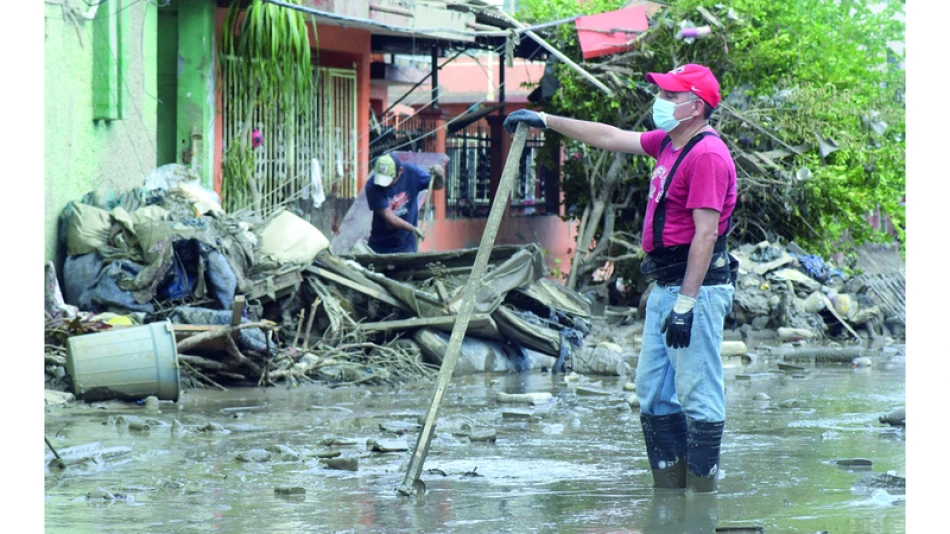
Mexico's Devastating Floods Cripple Infrastructure: A Cautionary Tale of Climate Chaos
Heavy rains killed at least 64 people and left 65 missing across Mexico last week, as a tropical depression triggered deadly landslides and floods along the Gulf Coast and central states. The disaster caught authorities off guard during what should have been the end of rainy season, damaging around 100,000 homes and destroying critical infrastructure.
The tropical system hit Mexico's Gulf Coast and central regions with unexpected force, causing rivers that were already swollen from months of rain to overflow their banks. Landslides buried communities while floodwaters turned streets into rivers of mud, washing away bridges and cutting off entire neighborhoods.
President Claudia Sheinbaum told reporters the scale of the rainfall was completely unexpected. "We didn't anticipate heavy rains of this magnitude," she said, describing damage to approximately 100,000 homes across the affected regions.
Navy Admiral Raimundo Morales explained the floods resulted from warm and cold air currents colliding over rivers that were already at capacity. This created a perfect storm scenario where additional rainfall had nowhere to go except over riverbanks and into populated areas.
The timing made the disaster particularly devastating. Mexico was nearing the end of its rainy season when the tropical depression struck, overwhelming drainage systems and rivers that had been dealing with months of accumulated water. While meteorologists were tracking tropical storms and two hurricanes on the Pacific coast, this Gulf-side system caught many by surprise.
Emergency crews spent days wading through deep floodwaters searching for stranded residents and delivering supplies to cut-off communities. Videos from the disaster zone showed rescue teams navigating chest-deep water while trying to reach people trapped in their homes.
The infrastructure damage extends beyond homes to critical transportation links. Bridges collapsed under the force of rushing water, isolating communities and complicating relief efforts. Roads disappeared under layers of mud and debris, making it difficult for emergency services to reach affected areas.
This disaster highlights Mexico's vulnerability to extreme weather events, particularly in regions where rivers and drainage systems struggle to handle intense rainfall. The combination of saturated ground conditions and additional heavy rain created conditions ripe for both flooding and landslides.
For Mexico's new administration, the disaster presents an early test of emergency response capabilities and infrastructure resilience. The scale of damage to homes and critical infrastructure will likely require significant resources for recovery and rebuilding efforts in the coming months.
Most Viewed News

 Sara Khaled
Sara Khaled






